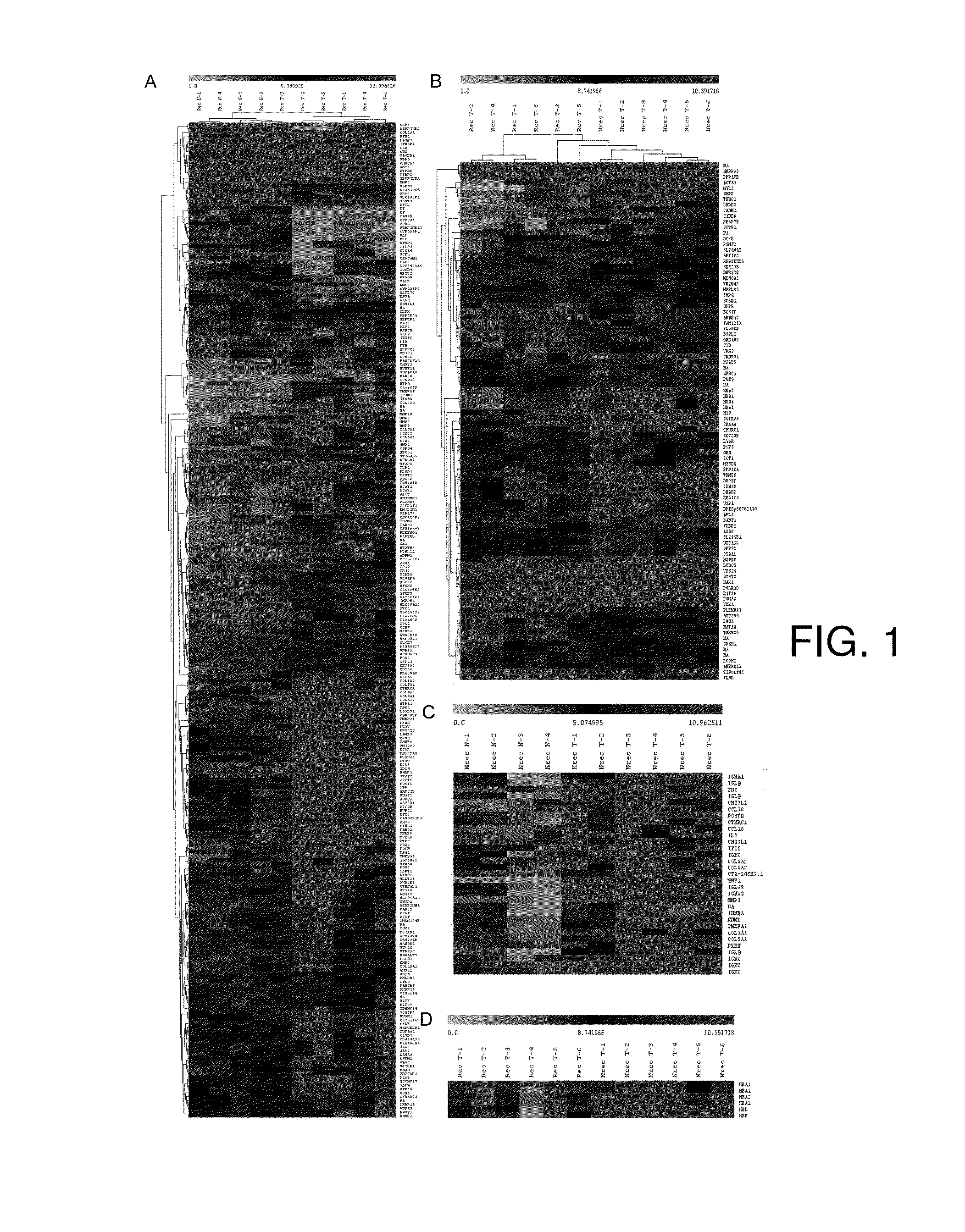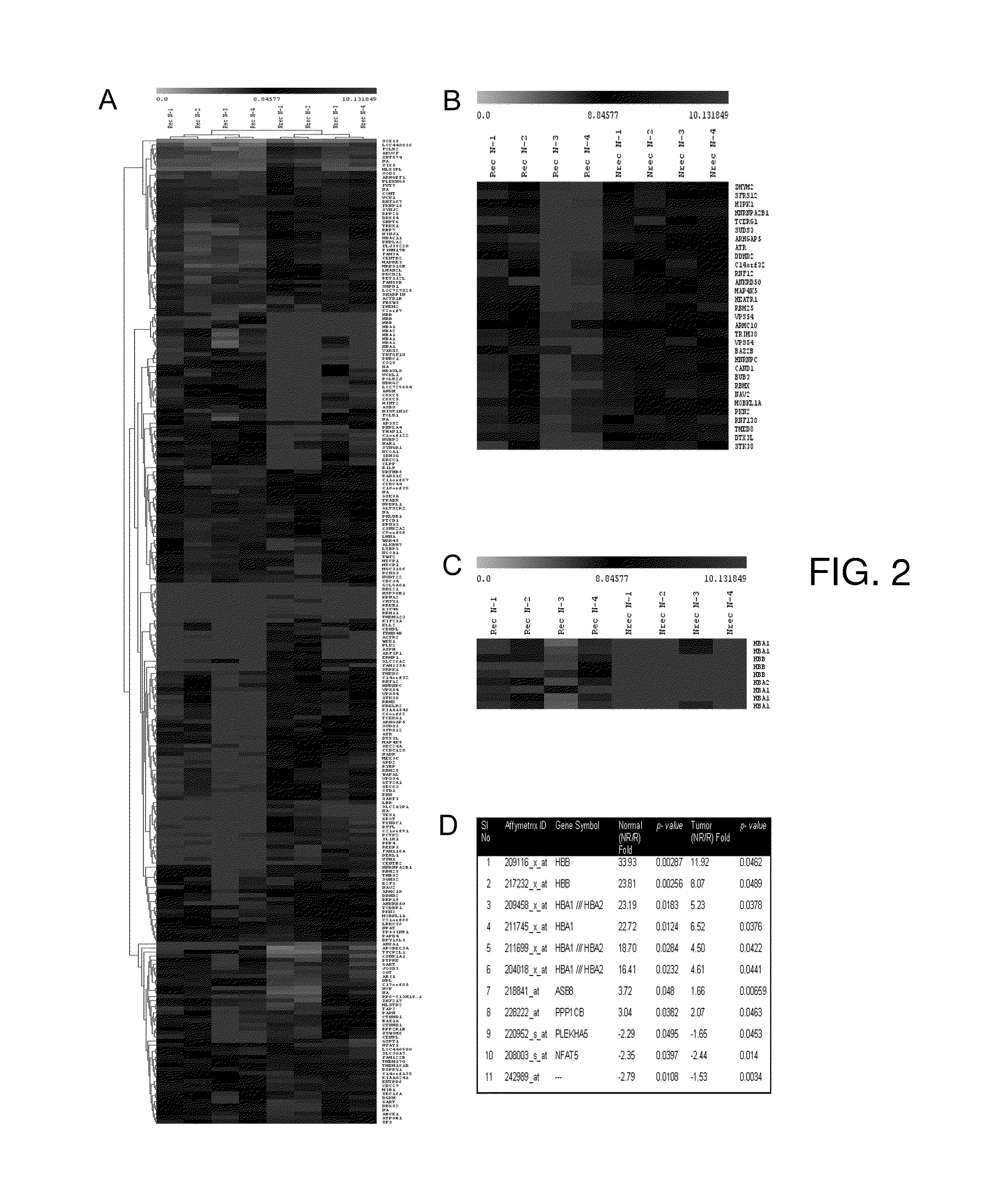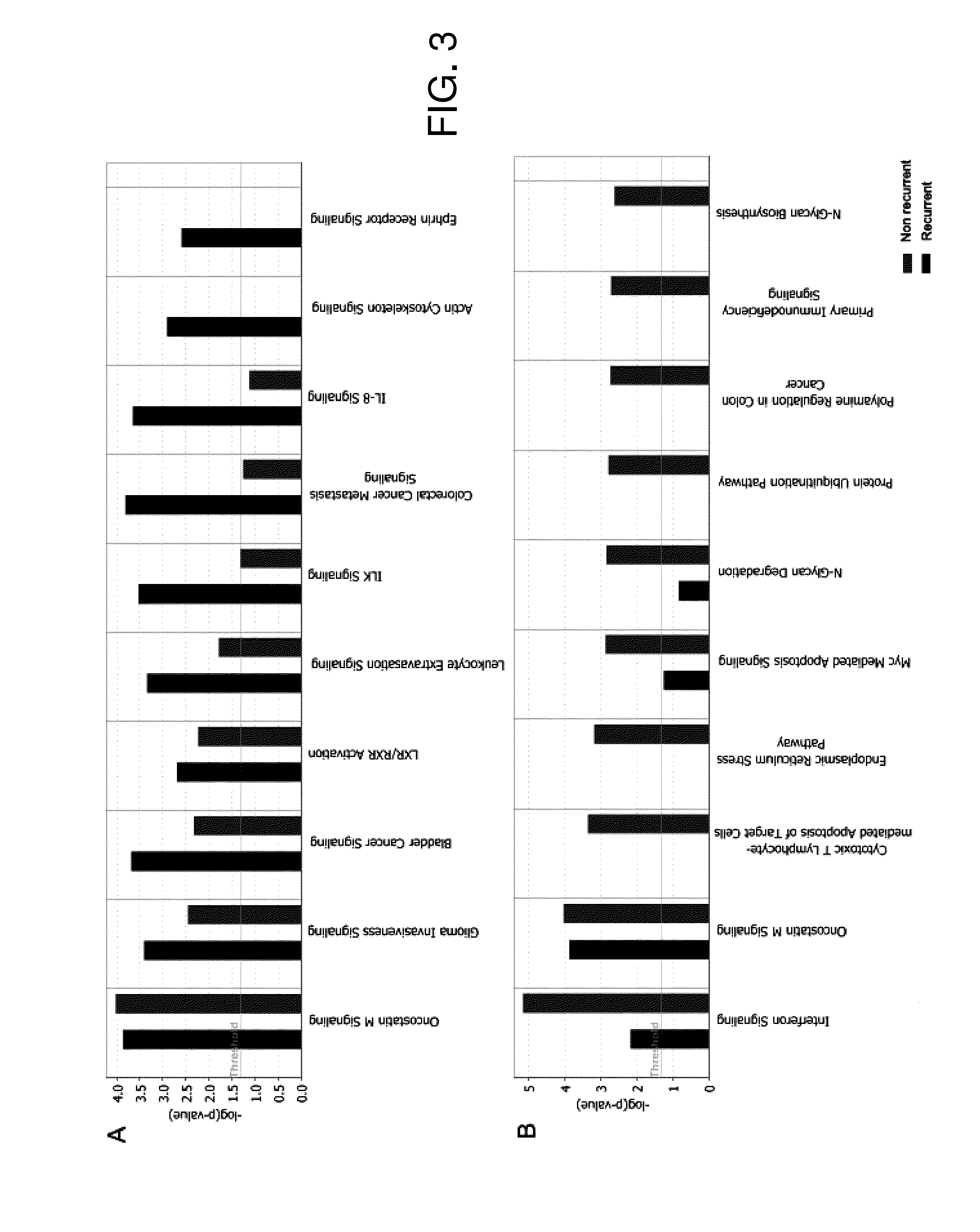Diagnostic tests for predicting prognosis, recurrence, resistance or sensitivity to therapy and metastatic status in cancer
a technology of prognosis and metastatic status, applied in the field of diagnostic tests for predicting prognosis, recurrence, resistance or sensitivity to therapy and metastatic status in cancer, can solve the problems of limited analog molecular signature for head and neck cancer
- Summary
- Abstract
- Description
- Claims
- Application Information
AI Technical Summary
Benefits of technology
Problems solved by technology
Method used
Image
Examples
example 1
Patient Details and Sample Collection
[0039]The tissue samples are collected from patients undergoing surgical treatment after obtaining mandatory approvals (Table VI). The samples that were subjected to microarray analysis were collected in RNA later (Ambion, Austin, USA), while the samples for validation were either snap frozen or collected in RNA later and archived at −80° C. if required to be stored. The clinical characteristics of the patients are obtained from the electronic medical records maintained at the tertiary care cancer center. The sample sets were grouped into three categories: Group I (Pre-treatment, non-recurrent), which included pre-treatment tissues from patients who remained disease-free after standard treatment (surgery and adjuvant chemo radiation); Group II (Pre-treatment resistant / recurrent) included pre-treatment tissues from those who recurred during a 2-year follow up period; Group III (post-treatment recurrent; standard treatment) included recurrent tissu...
example 2
RNA Isolation, Labeling of cRNA and Hybridization
[0040]Total RNA was isolated using the Qiagen RNeasy Kit (Qiagen, CA, US) and the samples that qualified through standard quality control criteria were selected for microarray. 100-200 ng of RNA was taken and biotinylated cRNA was prepared using the Two-cycle labeling Kit protocol (Affymetrix, CA, USA). The labeled cRNA was purified by the Genechip sample cleanup module (Qiagen, CA, US), fragmented and 20 μg hybridized to HGU133 plus 2 arrays (54,675 probes) using standard Affymetrix protocols. The hybridized chips were washed, stained and scanned by the Affymetrix Fluidics Station and Genechip Scanner 3000 using prescribed protocols.
example 3
Microarray Analysis
[0041]The preliminary analysis to ascertain the internal controls and the hybridization efficiency was carried out using the Gene Chip Operating Software (GCOS) and Microarray Suite (MAS5, Affymetrix, CA, USA). The CEL files were extracted and imported into GeneSpring 7.2 (Agilent Technologies, CA, USA) software package for analysis. Raw image data were background corrected, normalized and summarized into probe set expression values using Robust Microarray Analysis (RMA) algorithm. For inter-array comparisons, data from each chip was normalized to 50% of the measurements taken from that chip (measurements of 50 and confidence p-values 1.5. Expression levels for individual genes are inferred as A) Differentially expressed genes identified in case of comparison with normal sample by measuring fold change (Fold change >2) or B) When only tumor samples are being analyzed, expression levels along with associated statistical significance values (p>0.01) are considered a...
PUM
| Property | Measurement | Unit |
|---|---|---|
| Electrical resistance | aaaaa | aaaaa |
| Sensitivity | aaaaa | aaaaa |
Abstract
Description
Claims
Application Information
 Login to View More
Login to View More - R&D
- Intellectual Property
- Life Sciences
- Materials
- Tech Scout
- Unparalleled Data Quality
- Higher Quality Content
- 60% Fewer Hallucinations
Browse by: Latest US Patents, China's latest patents, Technical Efficacy Thesaurus, Application Domain, Technology Topic, Popular Technical Reports.
© 2025 PatSnap. All rights reserved.Legal|Privacy policy|Modern Slavery Act Transparency Statement|Sitemap|About US| Contact US: help@patsnap.com



